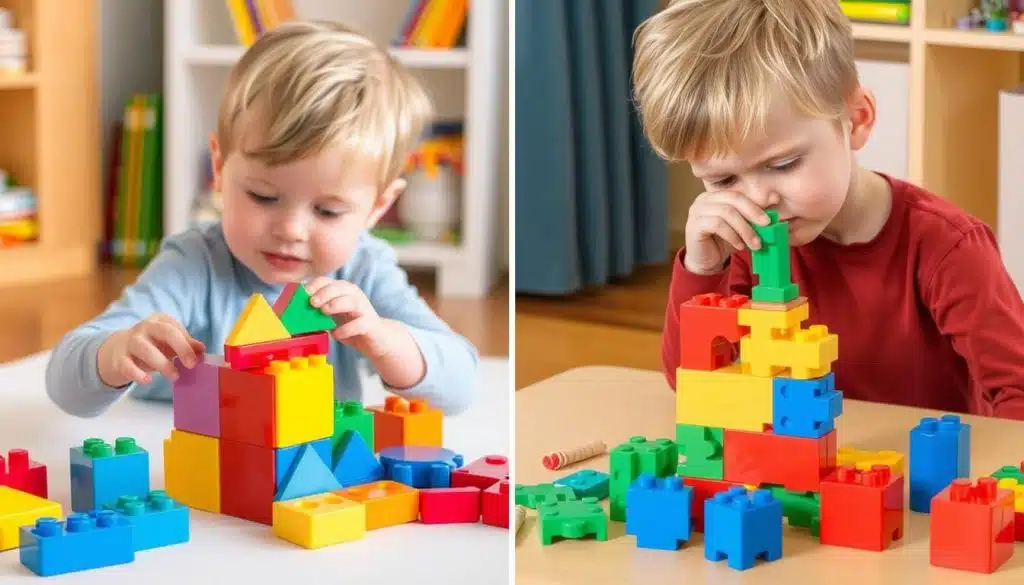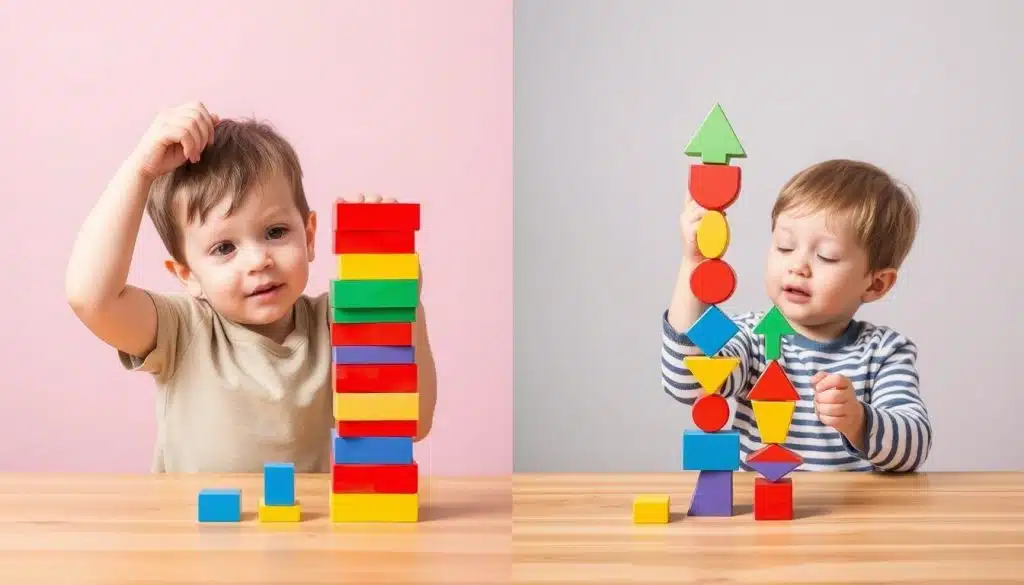“Learning is not the product of teaching. Learning is the product of the activity of learners.” – John Holt, educator and author.
Jean Piaget’s work on cognitive development is a core concept for social work practice. His theory focuses on two main ideas: assimilation and accommodation. These ideas show how people learn, grow, and adapt to new things.
Assimilation in social work is when we add new knowledge to what we already know. It helps us understand new concepts better by fitting them into what we already know. Accommodation is when we change our thinking to fit new experiences that challenge what we thought we knew.
For social workers, knowing about assimilation and accommodation is very important because it helps them support clients’ learning and growth. This article will look at Piaget’s learning theory, the role of schema, and how assimilation and accommodation help in social work.
Piaget’s theory shows how important assimilation and accommodation are in learning. Assimilation means adding new info to what we already know. Accommodation is about changing our mental structures to fit new experiences. This balance helps us grow and learn.
At first, kids tend to see new things through their own eyes. They try to fit new information into what they already know. But as they get older, they start to change their views to fit new experiences. This helps them understand the world better.
Jean piaget said we adapt to new things in two main ways: assimilation and accommodation. Assimilation lets us add new info to what we know. It keeps our views the same. Accommodation changes our views to fit new info.
Schemas are how we organize info in our minds. Assimilation helps us quickly fit new info into our schemas. But, it can lead to mistakes if the new info doesn’t fit perfectly.
For children, assimilation and accommodation are important concepts for growing their minds and learning about the world. In the sensorimotor stage, kids try to understand the world by experimenting. This helps them move through different stages of learning.
“Assimilation serves as a mental shortcut, enabling individuals to categorize vast amounts of information swiftly and adapt to their environment.”
Understanding assimilation and accommodation helps social workers because It shows how people, especially children, learn and adapt. This knowledge helps social workers support their clients better, tailoring help to each person’s needs.
Assimilation means adding new info to what we already know without changing it. Accommodation is about changing our understanding to fit new info.
Seeing assimilation and accommodation examples can help us to better understand the concepts. Assimilation occurs when a child encounters new information and integrates it into their existing cognitive frameworks without altering them. For instance, if a child who already understands the concept of a dog sees a cat for the first time, they might initially refer to it as a “dog” because it shares similar features, such as being a pet and having fur. This demonstrates how the child uses existing knowledge to make sense of new experiences.
On the other hand, accommodation involves modifying one’s existing beliefs to incorporate new information. Continuing with the previous example, once the child learns that a cat is a distinct animal with different characteristics—such as purring and behavior—they adjust their mental framework to recognize the differences between dogs and cats. This shift is crucial for a child’s intellectual growth, as it encourages flexibility in thinking and problem-solving. Accommodation allows for a deeper understanding of the world, fostering both curiosity and the ability to navigate increasingly complex situations.
Both assimilation and accommodation play critical roles in a child’s learning journey. They not only help children process the plethora of new information they encounter daily but also contribute significantly to their overall cognitive development. A practical example of these concepts in action can be seen in playful learning situations. When children engage with toys, they often assimilate and accommodate new features or ideas based on their previous play experiences. For instance, if a child who usually plays with soft toys starts using building blocks, they might initially apply their existing play strategies (assimilation) but eventually learn to create and balance structures, leading to a modified approach to play (accommodation).
| Assimilation | Accommodation |
|---|---|
| Integrating new information into existing schemas without changing them | Modifying schemas to incorporate new information |
| Examples: Recognizing a St. Bernard as a dog, solving familiar math problems | Examples: Creating a new schema for cats, adapting to complex scientific theories |
| Benefits: Consistency, enhanced confidence, increased engagement | Benefits: Adaptive learning, critical thinking promotion, preparation for real-world challenges |
| Challenges: Limited perspectives, risk of oversimplifying complex topics | Challenges: Potential overwhelm and resistance to change |
Piaget found four stages of cognitive development. In the early stages, assimilation is critical in helping children form basic ideas. As they grow, accommodation becomes more important as they face new challenges.
Understanding Piaget assimilation and accommodation helps social workers support learning. This knowledge lets them create strategies that help people grow and adapt. It’s about making a difference in the lives of individuals and communities.

Using block play and creative activities helps with assimilation and accommodation. It helps kids grow in their thinking. Child-to-child learning and working together, inspired by Vygotsky, also helps. It helps children to learn from each other and grow.
In therapy, knowing how clients assimilate and accommodate is key. It helps us plan better how to help them. We can adjust our help to fit their learning needs.
Culture also matters as it shapes how people see the world. It affects how clients learn and grow in therapy. It’s important to respect and understand these differences in our work.
Cultural assimilation is a complex process through which individuals or groups adopt the practices, values, and beliefs of a dominant culture, often resulting in a blending of cultural identities. This phenomenon can be seen in various contexts, where immigrants, minorities, or indigenous populations increasingly find themselves navigating the expectations of a prevailing culture. The journey towards assimilation often involves adaptation, a gradual yet significant shift in behavior and mindset, which can sometimes lead to a dilution of one’s original cultural identity. This tension between maintaining cultural heritage and embracing new societal norms can evoke a deep sense of belonging or disenfranchisement, depending on the context and the individual’s experiences.
In psychology, the concept of assimilation is also relevant, particularly in the framework developed by Jean Piaget. He proposed that learning and cognitive development occur through two vital processes: assimilation and accommodation. In the context of cultural assimilation, individuals may assimilate new cultural experiences into their existing cognitive frameworks, allowing for an integration of these experiences without entirely relinquishing their original beliefs. Conversely, when faced with significant cultural differences, they might undergo accommodation—transforming their cognitive frameworks to incorporate new cultural norms and practices. This dual mechanism illustrates how cultural assimilation can enhance understanding and interaction between diverse groups while fostering personal growth and cognitive flexibility.

Using Piaget’s ideas in our work helps us support many clients. It lets us tailor therapy and help them grow. It also helps us consider culture, making our work more meaningful and effective.
Using Piaget accommodation and assimilation in social work helps us better support our clients. It lets us understand how people learn and grow. This way, we can make our help more effective and personal.
As social workers, we need to keep learning about these cognitive processes. This knowledge helps us give the best care to our clients. Knowing the difference between assimilation and accommodation is key. It helps us see how people, especially kids, learn and grow.
By using Piaget’s ideas, we can make our work more meaningful. We can help our clients in ways that meet their needs. This approach helps us support the growth and well-being of the communities we serve.